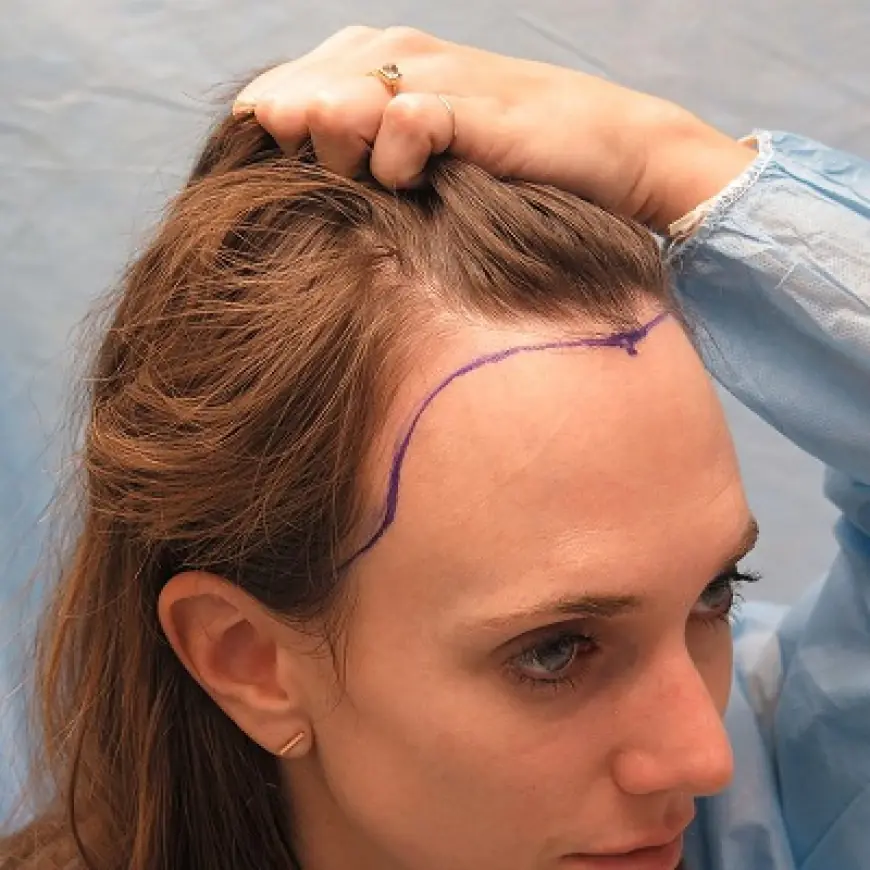Hair Transplant in Islamabad: Before and After Transformations
Hair loss can be a distressing experience for many individuals, affecting their confidence and self-esteem.

Hair loss can be a distressing experience for many individuals, affecting their confidence and self-esteem. With advancements in medical technology, hair transplant procedures have become a viable solution for restoring hair and enhancing appearance. Islamabad, the capital of Pakistan, has emerged as a leading destination for hair transplant treatments, offering world-class clinics and experienced surgeons. This blog explores the transformation process of hair transplant in Islamabad, detailing what to expect before and after the procedure.
Understanding Hair Transplantation
A hair transplant is a surgical procedure that involves transferring hair follicles from a donor site (usually the back of the scalp) to areas affected by hair loss. The two primary techniques used in hair transplantation are:
-
Follicular Unit Extraction (FUE): Individual hair follicles are extracted and transplanted to bald or thinning areas.
-
Follicular Unit Transplantation (FUT): A strip of scalp with healthy hair is removed and dissected into grafts for transplantation.
Both methods have proven to be effective, providing natural-looking results that can significantly improve one’s appearance.
Before the Hair Transplant: Preparation and Expectations
Before undergoing a hair transplant in Islamabad, patients must undergo a thorough consultation with a qualified specialist. This process involves:
1. Initial Consultation
During this session, the surgeon assesses the patient's hair loss pattern, donor hair availability, and overall scalp health. The surgeon then discusses the most suitable technique and provides a realistic expectation of results.
2. Pre-Surgical Instructions
Patients are typically advised to:
-
Avoid smoking and alcohol at least two weeks before the procedure.
-
Stop taking blood-thinning medications (under doctor’s supervision).
-
Maintain a healthy diet and stay hydrated.
-
Wash their hair with a mild shampoo on the day of surgery.
3. Mental Preparation
While a hair transplant is a safe procedure, patients should have realistic expectations. Hair growth takes time, and the full results are not immediate. The journey requires patience and adherence to post-operative care guidelines.
During the Procedure: What Happens?
The actual hair transplant procedure can take anywhere from 4 to 8 hours, depending on the number of grafts required. The key steps include:
-
Administration of Local Anesthesia: The scalp is numbed to ensure a painless experience.
-
Extraction of Hair Follicles: Either through FUE or FUT, donor follicles are harvested.
-
Recipient Site Preparation: Tiny incisions are made in the balding areas where follicles will be implanted.
-
Implantation of Grafts: Hair follicles are carefully placed in a natural pattern.
-
Post-Surgical Dressing: The treated areas are bandaged, and post-care instructions are given.
After the Hair Transplant: Recovery and Results
Recovery after a hair transplant in Islamabad follows a structured timeline, with noticeable improvements occurring over several months. Here’s what to expect:
1. First Few Days Post-Surgery
-
Mild swelling and redness in the treated areas.
-
Patients are advised to sleep with their heads elevated.
-
Antibiotics and painkillers may be prescribed to prevent infection and discomfort.
2. First Two Weeks: Healing Phase
-
Small scabs form around the transplanted follicles.
-
Avoiding direct sun exposure and strenuous activities is crucial.
-
Patients must follow a gentle hair-washing routine as instructed by the surgeon.
3. First Month: Shedding Phase
-
Transplanted hairs may fall out, which is a normal part of the process known as "shock loss."
-
The follicles remain intact and will soon start producing new hair.
4. Three to Six Months: Initial Hair Growth
-
New hair begins to emerge from the transplanted follicles.
-
Hair may appear thin initially but will gradually thicken over time.
5. Six to Twelve Months: Visible Transformation
-
Hair density significantly improves, and the new hair blends seamlessly with existing hair.
-
Styling and haircuts can be done as desired.
6. One Year and Beyond: Full Results
-
The final results are fully visible, showcasing a fuller and natural-looking hairline.
-
Any minor inconsistencies usually resolve, leaving a uniform and aesthetically pleasing appearance.
Before and After Transformations: Real-Life Success Stories
Patients who undergo hair transplants in Islamabad often experience life-changing transformations. Some common benefits include:
-
Increased Confidence: A restored hairline enhances self-esteem.
-
Natural Appearance: Advanced techniques ensure undetectable results.
-
Permanent Solution: Unlike temporary hair treatments, transplants provide lasting results.
-
Enhanced Youthful Look: A fuller head of hair contributes to a more youthful and vibrant appearance.
Choosing the Right Clinic in Islamabad
For the best results, selecting a reputable hair transplant clinic is crucial. Key factors to consider include:
-
Surgeon's Experience and Credentials: Look for board-certified professionals with proven expertise.
-
Technology and Techniques Used: Clinics offering advanced FUE and FUT techniques ensure better outcomes.
-
Patient Reviews and Testimonials: Positive feedback from previous patients reflects the clinic’s success rate.
-
Cost and Value for Money: While affordability is important, quality should never be compromised.
Conclusion
A hair transplant in Islamabad is a life-enhancing procedure that provides natural and permanent results. With skilled surgeons, cutting-edge technology, and affordable pricing, Islamabad has become a preferred destination for individuals seeking effective hair restoration.












